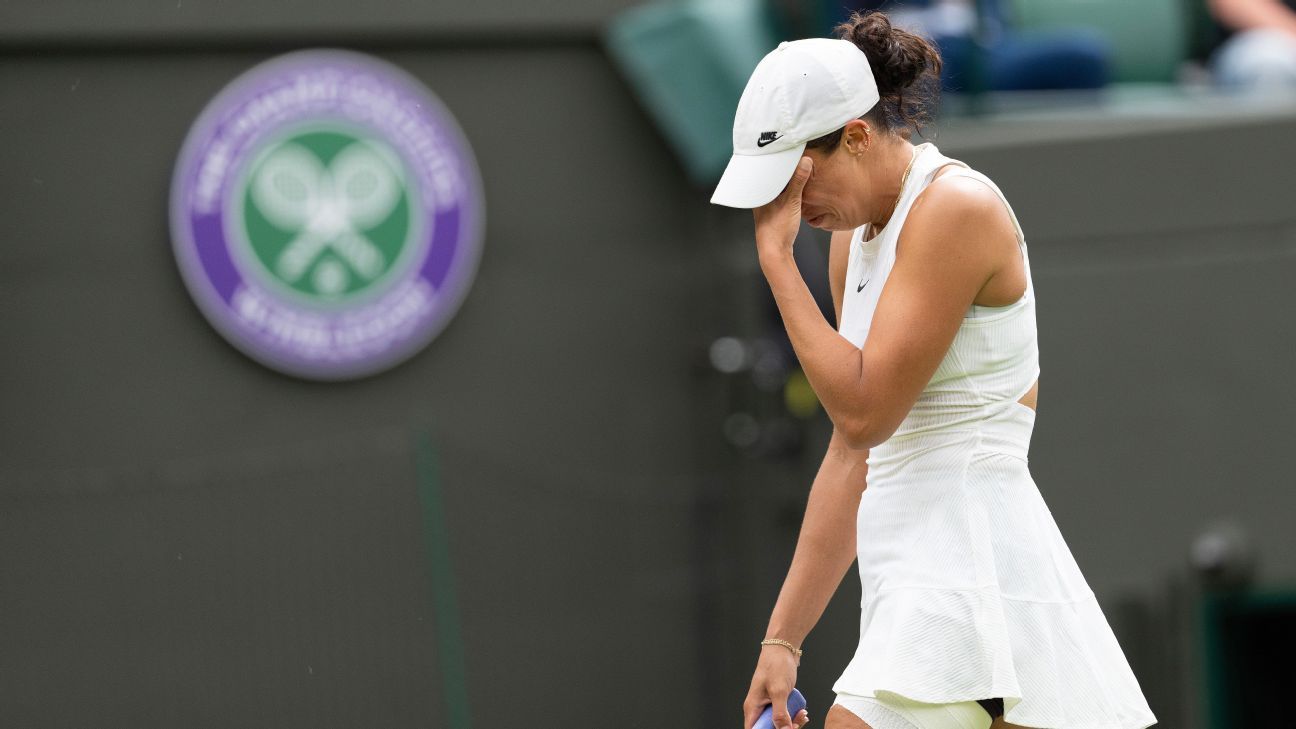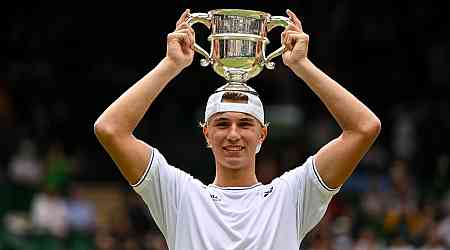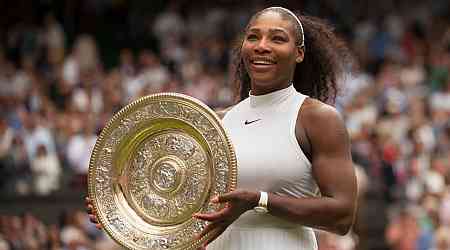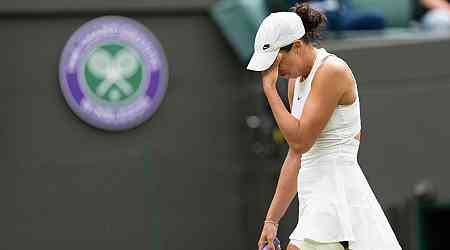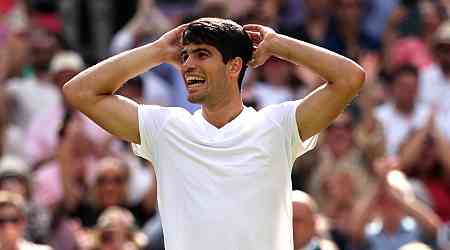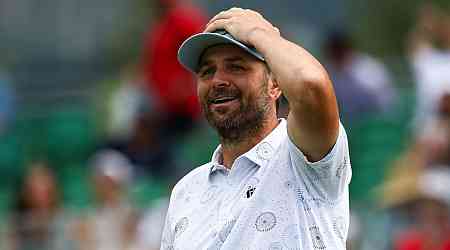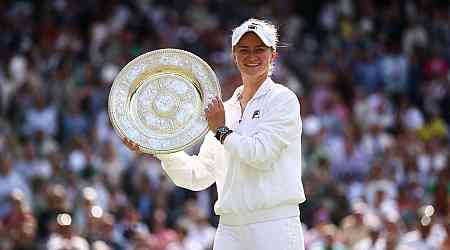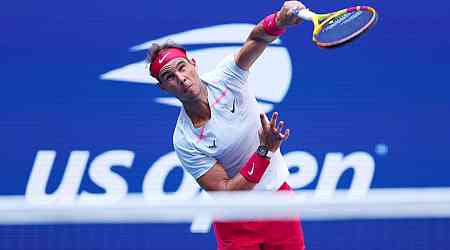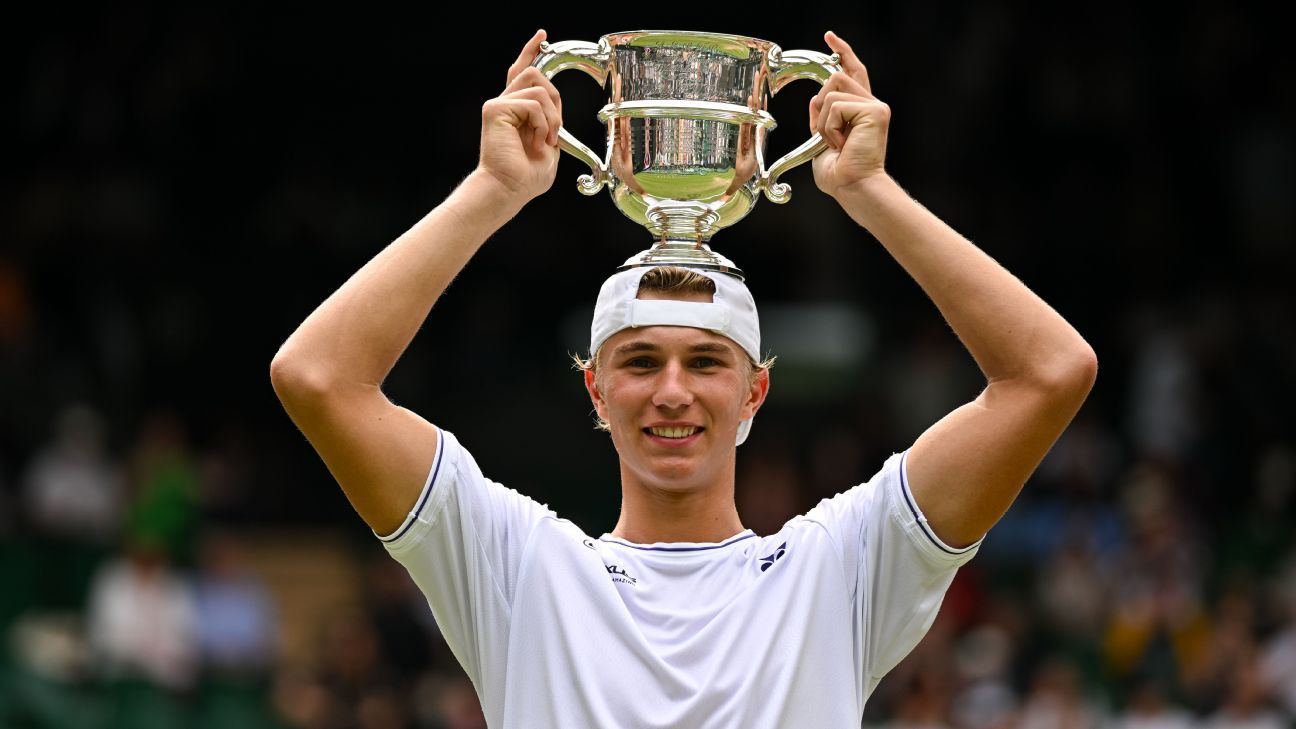WIMBLEDON, England -- Nine players were out of the competition before play even began at the All England Club.
Four women and five men withdrew from Wimbledon with injuries in the seven days between the start of qualifying and the start of the main draw and were replaced by lucky losers. It was the most women to do so at the tournament in 30 years.
Since then, injuries have continued to plague the event. Four women and four men retired during their singles matches, with two more men withdrawing ahead of their upcoming matches. No. 9 seed Alex de Minaur withdrew just hours before his quarterfinal clash against Novak Djokovic with a hip injury sustained during match point of his fourth-round victory.
"It's devastating, no way to beat around the bush" de Minaur said Wednesday. "I knew as soon as I felt that pop, I knew something bad had happened ... I think this injury is more of a freak injury. It's an excessive amount of force made to slide on a grass court."
He's not the only one to cite the grass as a factor for an injury here, or during other tournaments from the brief season on the surface leading into Wimbledon. Far from it, in fact.
Danielle Collins, the No. 11 seed, injured her leg during her fourth-round match against Barbora Krejcikova on Monday. She was able to finish the match, losing in straight sets, but needed to receive treatment during the second set and had it wrapped by a trainer.
"It's amazing how I think on the grass, how much the movement is in your mind and you think about every little step that you take. I feel like I stopped thinking about that for one second, and I ended up hurting my leg," Collins said after the match. "I feel like obviously there's been a ton of injuries on the grass, left and right. It seems like people are going down."
That same day, Alexander Zverev slipped on a patch of green -- or unworn -- grass and hyperextended his knee. He later compared himself to a "cow on ice" on the surface and then said he was playing on "one leg" during his fourth-round loss to Taylor Fritz two days later. Madison Keys sustained a leg injury late in the third set of her fourth-round match against Jasmine Paolini and tearfully retired at 5-all. Grigor Dimitrov slipped and fell on the grass of his match in the same round against Daniil Medvedev. He too was forced to retire from the match and later said it was an abductor tear in his left leg that would require rehab. The list goes on.
It's impossible to say for sure what's causing these injuries, but the weather certainly hasn't helped. In addition to wreaking havoc on the schedule, rain can make the outer courts slippery. Even when play resumes after the rain has stopped, the courts are unable to fully dry out without sunshine, and they tend to continue to absorb remaining humidity. And during the opening nine days of the tournament -- and throughout the spring and early summer in Northern Europe -- there has been a lot of rain, significantly cooler temperatures than normal and not much sunshine.
Roofs on Centre Court and No. 1 Court allow for play to continue no matter the conditions, but it still has an effect. Djokovic, who has played all of his matches leading into the semifinals under the roof on the two show courts, said it was part of the reason he fell multiple times during his fourth-round victory over Holger Rune.
"It feels like we've been playing an indoor grass court tournament here more than outdoor, to be honest," Djokovic said Monday. "Once you close the roof, you know that the grass is going to be more slippery. So there's more chances that players will fall. Unfortunately some of the falls have caused some of the players to withdraw. It's part of this surface. You can't really change that. I mean, it's grass. It's a live surface, and it reacts to different conditions, the humidity, etc."
There's nothing I wanted to do more than go out and compete my hardest but my body didn't allow me to. Heartbroken and devastated. Thank you to all the support always, I will be back stronger than before 💜💚 @wimbledon pic.twitter.com/53OyJbd856
— alex de minaur (@alexdeminaur) July 11, 2024
Of course, even without the excess rain throughout the areas where grass-court tennis is played, the transition from clay to grass is notoriously difficult, and the surfaces are vastly different. The ball bounces slower and higher on the red clay found at the French Open and most of the European lead-in events, and players can slide with relative ease. On grass, the fastest of three surfaces, the ball moves quicker and tends to bounce lower. Because of this, and with the added factor that the grass can often be slippery, players tend to stay lower in their movement and must, as Collins said, be constantly aware of their balance. It makes sliding far more difficult, and movement is a constant battle for those unfamiliar.
And the grass season is the shortest stretch on the tennis calendar. The French Open ended this year on June 9, leaving just over three weeks until the start of Wimbledon. At most, a player could participate in three tour-level lead-in tournaments on the surface, and that would leave little to no rest time after the clay season. Most of the top players participated in one or two events, with some (like world No. 1 and reigning French Open champion Iga Swiatek) opting to not play any at all.
While playing in these events can provide valuable experience on the surface, it proved costly for some players. At the German Open in Berlin, which concluded just over a week before the start of Wimbledon, several of the top seeds sustained injuries, including two-time Australian Open champion Aryna Sabalenka, who then withdrew ahead of her first-round match at Wimbledon, and reigning Wimbledon champion Marketa Vondrousova, who hurt her leg in Berlin after a fall and then was upset in her opening match at the All England Club. While she said the injury wasn't the reason for the loss, Vondrousova said she couldn't help but be a "bit scared because of my leg" throughout.
Frances Tiafoe fell during his opening-round match at Queen's Club, held the same week as the event in Berlin, and hurt his right knee. He was forced to retire from the match as he limped off of the court. He wore a sleeve on his knee at Wimbledon but was able to recover enough in time for the tournament. Tiafoe had one of the most memorable matches of the fortnight in a five-set thriller in the third round against Carlos Alcaraz, the defending champion. He slipped during the fourth-set tiebreak and tweaked his knee ("It didn't feel good," he said after) but was able to play the rest of the match.
And injuries may become an increasingly common theme throughout the rest of the season.
Typically players would turn their focus to the hard court after Wimbledon, but this year many will first return to the clay for the Olympic Games. Held at Roland Garros in Paris, the competition gets underway on July 27, just two weeks after Wimbledon ends. Some players, such as Tiafoe, Sabalenka and Keys, are choosing to skip the event to focus on the US Open swing. But some who are going are already concerned about the potential for injury.
"I'm slightly worried about how the clay is going to affect me," Fritz said after his quarterfinal loss Wednesday. "I don't know how much people know about it, but my [groin] injury at the French Open, it was probably worse than I made it seem. I was kind of playing through it. In my match with Casper [Ruud], it just really lit up like super bad to where it got really hard to slide ...
"It was much better because on grass I'm not sliding. It's more of an injury that really bothers me when I'm sliding, separating my legs a lot. I'm going to immediately go back to PT and try to do as much cramming as possible, and hopefully I can feel good to be sliding on clay again. I'm slightly worried about how that is going to affect my body."
From Paris, most of the men will immediately head to Montreal, and most of the women to Toronto, for the 1000-level Canadian Open on hard court. The Olympic competition ends on Aug. 4. The main draws in Canada start on Aug. 6.
Will it be brutal? Physically demanding? Yes to both, but worth it to those choosing to play.
"I know if I'm thinking strictly about my personal career, it's better to go to Canada, prepare [on the] hard courts, etc., [but] when I'm 40, if I can say I played in Tokyo Olympics, Paris Olympics, Los Angeles Olympics, I had a lot of fun in my life, my career, I'm going to be happy," said Medvedev, who will play Alcaraz on Friday for a spot in the Wimbledon final. "I'm going to prepare a lot of doubles and mixed doubles, because I do believe I have more chances there than in Roland Garros singles. I'm going to have a lot of fun, enjoy playing. I look forward to it."


















